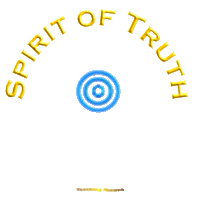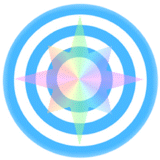
|
|
|
|
|
|
|
|
|
|
More Introduction's►
◄

 ►
►
|
|
![]()
The Urantia Book: An
Evaluation
Jim Mills
1970
![]()
Introduction:
Ever since man first became conscious of himself, and of his environment, he has asked questions about both. Regardless of how the questions are worded, in general they can be reduced to a few simple queries. These are: "Why am I here?" "Where am I going?" "What is the meaning of it all?", and, "What am I?"
The answers to these questions have not been easy to obtain. Man, therefore, developed a technique of postulating answers to his questions, and then attempted to develop the means of testing these postulates under reproducible conditions consistent with his knowledge of his environment. Thus was the scientific method for the study of physical phenomena born and its success has changed the face of civilization.
No such success has accrued to the efforts of man in the areas of meanings (Philosophy) and values (Religion), for no valid method has ever been developed to test the postulates of philosophy and religion with the efficiencies available to science at the physical level of existence. The truth of meanings and values is something that must still be "felt" by the individual as a near-emotional experience. Consequently, individual judgment, with all its personal uniqueness and variety, is still a major testing procedure for new postulates in Philosophy and Religion.
However, history has taught us that many men and women who we have called "prophets" have periodically appeared with new and advanced postulates that have gained such acceptance that new religions have resulted therefrom which have had tremendous influence on the development of civilization. In this group we find Gautama Siddhartha (Buddha) in India; Lao-Tse and Confucius in China; Ikhnaton in Egypt; Zoroaster in Persia, all of whom mysteriously appeared about 2,500 years ago, almost as though by design; to be followed later by Jesus of Nazareth and Mohammed in Arabia. Scores of others, perhaps less well known, have appeared on the stage and have had their influence on the world.
The teachings of these "prophets" we have called "revelations", because each advanced a new concept of man in relation to ultimate reality they "revealed" new truths to man about himself and his relations to his environment, and in some degree, to his Creator. They have all had a strong impact because they provided contemporary answers to the questions asked above.
But no revelation, short of finding and recognizing ultimate reality, God, The Uncaused Cause, can be final. Revelation is time periodic, partial, and limited to the conceptual boundaries of manís intellectual universe of knowledge. As manís intellectual frontiers have expanded, and when the need for new revelations caused by this has grown to a point of great tensions, another revelation has always appeared.
Today our understanding of cosmology is growing with the use of the 200-inch telescope, and the radio-telescopes and receivers, aimed at space. Data already collected may not be analyzed and interpreted for many years. Men have actually walked on the Moon. Probes have gone to the planets Mars and Venus to record and return data, even photographs.
Slowly it is dawning upon us that even the physical size of the universe may be beyond our present capabilities to comprehend. So far we have been able to detect very little about physical universe organization beyond our present ideas about galaxies. We ask the questions: How are the starry heavens organized? Is there a pattern in cosmology such as we find in terrestrial nature? What is manís relation to all of this? Does he have a future out there? Are our ideas about the origin, age, and development of the universe valid? Are we being misled by our ability to observe only a small portion instead of the total phenomenon? And finally, again, why am I here? These questions contribute to a mounting tension.
In 1955, without fanfare or publicity, without preaching or promotion, there appeared in the city of Chicago, Illinois, U.S.A., a 2097 page book called The Urantia Book. Its name derives from the fact that within it our planet is called Urantia. Those who have read it seriously and in detail, and repeatedly, are generally convinced that it is the "revelation" for which contemporary society has so long been crying.
What makes this book a revelation? The true answer can only be found in reading it then studying it. However, some reasons are and can be given. Simply, because it presents a cosmology which is consistent with, and an extension of our present knowledge of cosmology. For example, it foretold Calcium 19 as being present in the sun. It was discovered there in 1964. (Time Magazine, May 29th, 1964, p. 80.) It presents a clear, understandable story about the nature and destiny of man. It teaches the religion of Jesus instead of a religion about Jesus. It recognizes the truths to be found in all religions. It recognizes evolutionary religion as separate from revelation. It stresses the importance of the individual regardless of origin and tells something about our supernal destinies. It differentiates between fact, meaning, and value: science, philosophy, and religion, and then unites them in a true integration.
The Urantia Book is divided into four parts.
Part One: Thirty-one papers. These depict the nature of deity and the reality of Paradise; discuss the cosmology of the Superuniverses, and portray some of their inhabitants by origin and function. They also discuss the organization and workings of the Central and Superuniverses.
Part Two: Twenty-five papers. These discuss the local Universe, an administrative subdivision, in terms of organization and administration complete with the personalities in authority. These papers also tell much about the career of the human personality after it terminates its stay on this planet, Urantia, by the death and dissolution of its physical carrying mechanism. They depict our first steps on new worlds and the tremendous program provided for our personal development which will sometime permit us to recognize God when we have, by our own efforts, aided by ever-present celestial help, grown and developed to that point where we have the conceptual capacity to see and recognize God. The challenge is immense and the help equal to it.
Part Three: Sixty-three papers. The history of our own planet, Urantia, from its origin in a sun (ours) thrown out by the now extinct Andronover nebula about 6,000,000,000 years ago to the present. Its geologic and life evolution (after implantation) is traced as well as the evolution of races, civilizations, customs, philosophies and religions. Many new insights found in hitherto unavailable sources are revealed. We learn much, previously forgotten and lost, about our own history and evolution. New and higher religious insights make their appearance.
Part Four: Seventy-seven papers. These record the life and teachings of that superb being known to us as Jesus of Nazareth. From hitherto unavailable sources, his pre-Urantian life is unfolded and the details of his own early existence here are told year by year. We learn details of his family life, his religious growth, the death of his father, Joseph, and much detail which was apparently withheld from his apostles. What actually happened when the so-called "miracles" were performed?
Presented in detail are the teachings of Jesus which even in the attenuated and compromised form know as Christianity have been the driving force behind Western Civilization. Reaffirmed is his great love for the individual, yet uncompromised is the high ideal of attainment he sets for everyone. Also presented is the real philosophy and religion of Jesus, and we learn how much evolutionary religion has diluted it and modified it in order to force it into the mold of passing contemporary doctrine and dogma. As presented, the religion of Jesus, and we learn how much evolutionary religion has diluted it and modified it in order to force it into the mold of passing contemporary doctrine and dogma. As presented, the religion of Jesus is dynamic, inspiring, uplifting, totally contemporary because it is timeless and worthy of lifelong study.
The writer once asked the late Sir Hubert Wilkins, who was a Urantia Book devotee even prior to publication, "What is your test of the validity of this work?" Sir Hubertís answer was a succinct classic. He said: "Its utter consistency with itself."
The writer has gained an outlook upon life and a personal philosophy solely from the study of this book that he has found in no other sources. Simply expressed, it is this. The Urantia Book has given me so many clues to the truths and realities that are to be found from the observation of life on this planet, that I desire to remain here to experience life and gain knowledge through the experience of living this life as long as my physical mechanism can be kept in working order. Knowledge distilled with experience produces wisdom, a commodity we all need. However, when my course is finally run, the day I die will be the most interesting day of my life.
J. C. Mills
![]()
A Service of
The Urantia Book
Fellowship
![]()
|
|
|
Go to www source |
|
|
![]()
